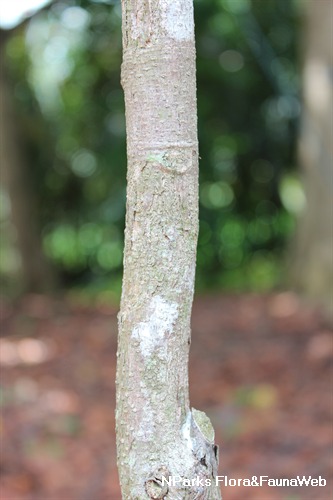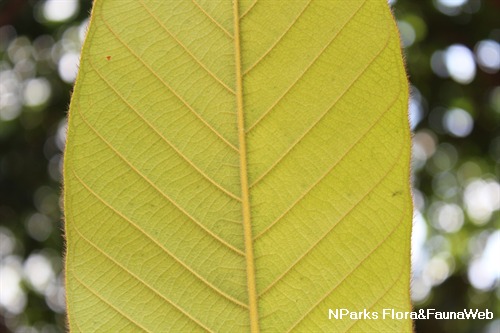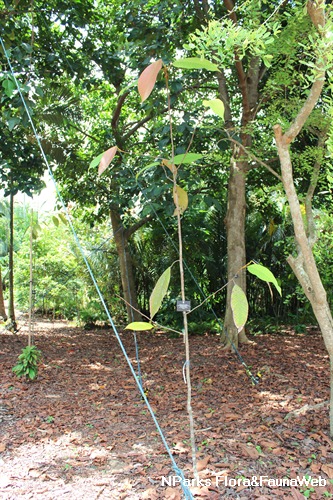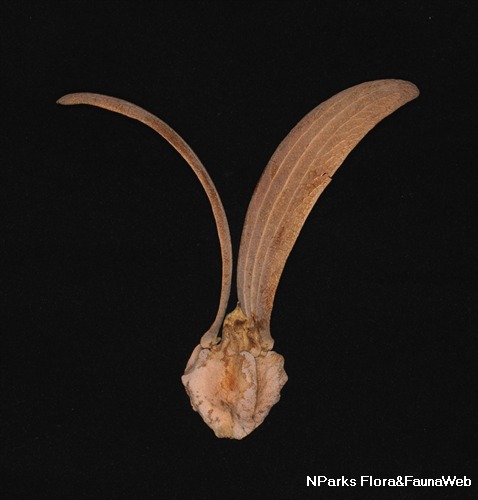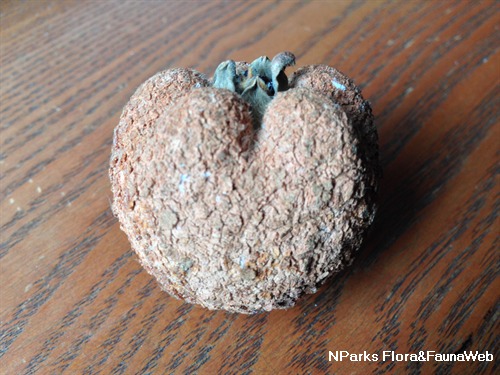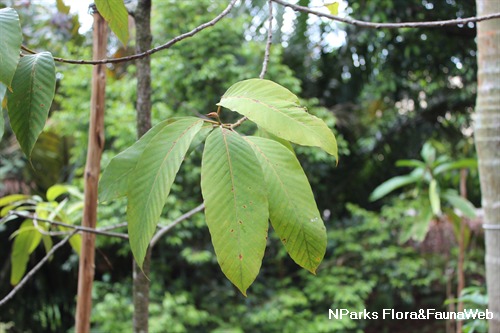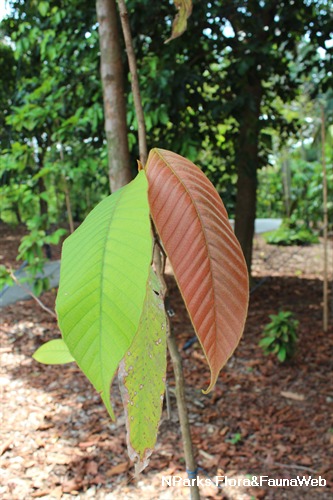
Back
Dipterocarpus rigidus
| Family Name: | Dipterocarpaceae |
| Common Name: | Keruing cogan, Keruing keluang, Keruing kelawar |
Name
Classifications and Characteristics
| Plant Growth Form | Tree (Big (>30m)) |
|---|---|
| Mode of Nutrition | Autotrophic |
Biogeography
| Native Distribution | Peninsula Malaysia, Riau, Lingga archipelagos, Borneo and Anambas Island. |
|---|---|
| Native Habitat | Terrestrial |
| Preferred Climate Zone | Tropical |
Description and Ethnobotany
| Growth Form | A large tree (up to 50 m tall) with 95 cm wide trunk (rarely exceeding 3 m wide) and buttresses up to 1 m tall. |
|---|---|
| Trunk | Bark is usually light coloured when young, becoming coarsely fissured as it ages. |
| Foliage | Leaves are ovate (about 13 - 25 cm long x 8 - 16 cm wide) and leathery with broadly tapering leaf base. Each leaf have 12 – 17 secondary veins and petiole is 3 - 6 cm long. The underside of the leaves and petioles are covered in dense pale golden hairs, which give a characteristic brown crown when viewing the tree from afar. |
| Fruit | Each fruit has 2 large wings (18 cm long, 5 cm long) and 3 shorter wings (8 mm long, 8 mm wide). |
| Habitat | A large tree which can be found in dry forest on coastal hills. |
| Similar | Young lightly coloured bark resembles Vatica species. |
| Etymology | Genus Dipterocarpus is from Greek words "dipteros" which means "two-winged" and "karpos" which means "fruit" and they refer to the character of the fruit. Species epithet rigidus means stiff which may refer to the leaves. |
Landscaping Features
| Landscape Uses | Parks & Gardens |
|---|
Plant Care and Propagation
| Light Preference | Full Sun |
|---|---|
| Water Preference | Moderate Water |
| Plant Growth Rate | Moderate |
| Rootzone Tolerance | Well-Drained Soils |
Foliar
| Mature Foliage Colour(s) | Green |
|---|---|
| Mature Foliage Texture(s) | Leathery |
Image Repository
Others
| Master ID | 29653 |
|---|---|
| Species ID | 3962 |
| Flora Disclaimer | The information in this website has been compiled from reliable sources, such as reference works on medicinal plants. It is not a substitute for medical advice or treatment and NParks does not purport to provide any medical advice. Readers should always consult his/her physician before using or consuming a plant for medicinal purposes. |


